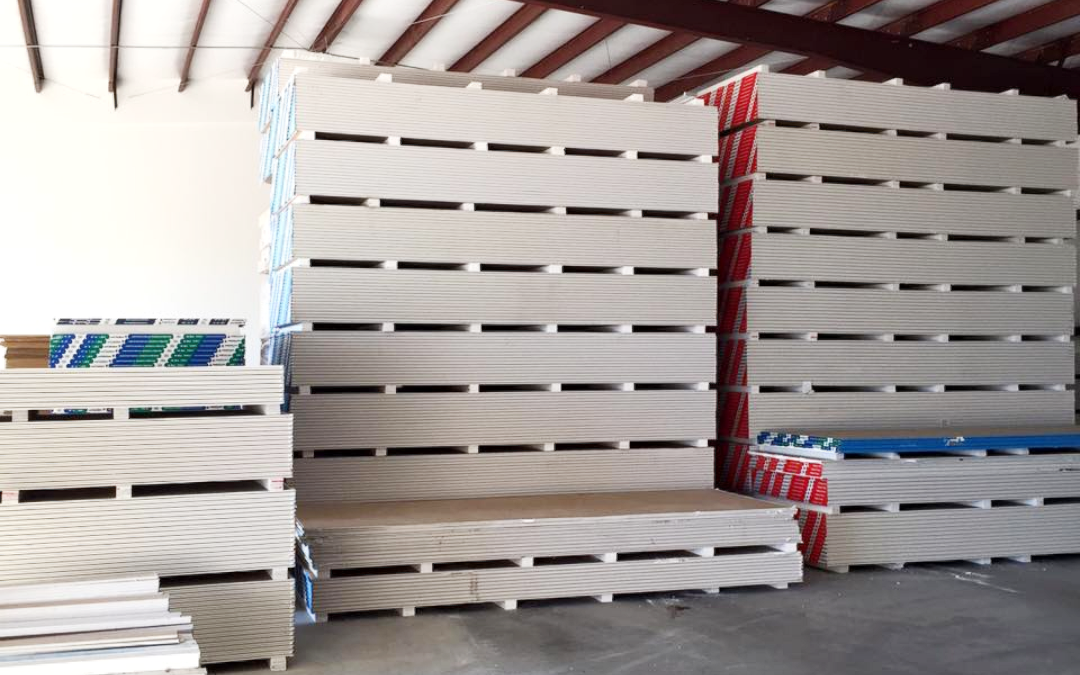To plaster or to drywall—that is the question. Whether you’re building or renovating, it’s always important to know the products you’re using to ensure your project is a long-standing success.
The drywall vs. plaster debate has a long history, and it all comes down to what is right for the type of project you’re doing and your budget. That being said, let’s tackle this debate and weigh the pros and cons of each to help you decide whether drywall or plaster is the best product for you.
Drywall Pros & Cons
Like anything else, there are strengths and weaknesses to using drywall. One of the biggest reasons to use drywall is its low cost—after all, affordability is always in.
The Benefits of Using Drywall
In addition to being cost-effective, here are a few other benefits to using drywall:
- It is easy to install and hang;
- It can be cut to fit exact specifications;
- It isolates noise;
- It is fire-resistant;
- It is easy to repair; and
- It provides insulation.
Drywall is a popular choice for contractors and builders because it’s an easy product to work with that offers many perks and features to enhance comfort. Unfortunately, there are also drawbacks to using this product.
Drywall Drawbacks
The cons of using drywall for a project include the following:
- Drywall is more vulnerable to damage; and
- Drywall sometimes shows fasteners.
It is important to note that there are different types of drywall for different applications, each offering different ranges of durability to damage. As mentioned above, drywall can also show fasteners, but only if it is not installed properly.
Plaster Pros & Cons
Before we delve into the pros and cons of plaster, let’s talk about the history of plaster and how it is used. Most builders use blueboard today, but before this material, plaster was applied over lath to act as a frame.
Plaster Perks
Although it’s not as popular as it used to be, plaster is still a good option for insulation because of the following:
- Plaster is durable;
- Plaster is fire resistant; and
- Plaster is soundproof.
You might notice that plaster and drywall offer many of the same benefits—both materials provide excellent resistance to noise and sound.
The Disadvantages of Plaster
Since it seems like we’ve found ourselves a tie between plaster and drywall, let’s take a look at the disadvantages of using plaster.
The cons of this material are:
- It is hard to work with;
- It cracks easily if installed poorly;
- It is more expensive; and
- It is a longer process.
Just like anything else, budget and time might be able to make your decision for you—plaster might be a good investment if you have the money and patience.
Why Drywall
There is no doubt that plaster has its benefits, but most professionals tend to shy away from using it because of its antiquity and high prices.
Drywall is now in and bigger than ever, a material that continues to be evolved and improved to meet different needs of different projects and uses including water-resistance, fire-resistance, and more. In addition to offering tailored products, drywall finishing is also easier to work with and allows for more personal touch with a wide variety of textures and colors. If you’re looking to save money and time while opting for design, drywall is a great go-to.
Quality Drywall for Your Project from DMS
Ultimately, the decision to use drywall vs. plaster is yours—now that you have the facts for both, you can determine which material is better for your project.
At Drywall Material Sales, we offer a range of the highest-quality drywall products to make your project successful, durable, and long-lasting. From Type X to Type C and water-resistant to fire-resistant, we have every type of drywall you might need for any application.
To learn more about how we can help you, give us a call today or stop by one of our locations to speak with a DMS drywall expert.

